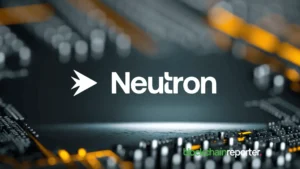
The crypto market is experiencing a major lull at the moment, with the total capitalization of the space currently hovering around the $1T mark despite it having scaled as high as $3T just seven months earlier. Despite this bearish pressure, the amount of innovation surrounding the industry has forged ahead at an impressive rate.
That said, Bitcoin is still continuing to navigate through a labyrinth of narratives surrounding it, especially since a lot of people consider the asset to simply be a store of value (with limited peripheral use cases). On the other hand, Ethereum and other layer-1 networks have been recognized as ecosystems with features that allow developers to devise unique decentralized applications (dApps) stop them.
The reason for Bitcoin’s somewhat slow development is because its community has been quite conservative in its approach to modifications being made to the protocol. This has been done to make sure that the currency’s core values remain rooted in the ethos of decentralization, stability and security. In this regard, it should be pointed out that some of the largest Bitcoin upgrades to date — such as Taproot, SegWit, Schnorr Signatures — took nearly 3 years to implement.
The Tide Is Changing
Bitcoin’s current valuation stands at over $575 billion, making it the currency with the deepest liquidity pool in the market today. And while more innovation may be desirable, a growing forum of investors have repeatedly demonstrated their willingness to put their BTC to productive use across various decentralized finance (DeFi) applications — primarily to generate handsome yields for themselves or in some cases take out crypto-denominated loans.
As demonstrated by the chart above, a growing volume of BTC has continued to make its way onto Ethereum — most likely to be deployed across different DeFi applications— rather than being spent via the Lightning Network. Not only that, according to a report commissioned by Trust Machines, an open-source network of decentralized apps and smart contracts built on Bitcoin, there is a massive amount of demand for Bitcoin-based DeFi apps that allow users to unlock more value with their assets within the currency’s base layer.
On the subject, it should be highlighted that while attempts to usher in a new era of programmability and scalability to Bitcoin started nearly a decade back, it was only a few years ago since the mainnet deployments of various projects — such as Stacks, the Lightning Network, RSK — started with a full head of steam.
To elaborate, a growing list of mainstream participants are now building on/partnering with the networks outlined above. For example, projects like GoStats, Hiro, Byzantion make use of Stack’s smart contract layer to settle BTC transactions using a unique Proof-of-Transfer mechanism.
Furthermore, earlier in 2022, Lightning Labs revealed that it will be allowing for the issuance of assets on the Lightning Network as well as releasing a BTC collateralized stablecoin. Similarly, Trust Machines announced a $150 million fundraiser with an ambition to build the infrastructure needed for applications to thrive and onboard users to Bitcoin. Lastly, startups within the Stacks ecosystem — such as Superfandom, Arkadiko, Gamma — have been actively working towards devising applications that can help spur the adoption of Bitcoin on a global level.
Bitcoin’s Future Looks Bright
Despite the global economy being gripped by bearish pressure for well over half a year, it is worth mentioning that demand for Bitcoin has continued to increase — as is highlighted by the growing amount of capital entering the asset’s ecosystem. That being said, while retail and institutional interest regarding BTC remains high, there are a few creases that need to be ironed out.
For example, the issue of centralization is a major pain point for Bitcoin-based protocols because when making use of products like RSK, a BTC-based smart contract layer, the security differences between BTC and ETH start to shrink. However, this is gradually changing thanks to the Lightning Network (LN) allowing for seamless crypto issuance and Stacks’ native mechanism — of using BTC natively — gaining an increasing amount of traction.
Another aspect of Bitcoin that is somewhat holding back its rapid applicatory growth, especially within the realm of DeFi, is its slow governance process. As mentioned earlier, at current speeds, making tangible alterations to the asset’s core protocol can be very time-consuming as every proposal undergoes a rigorous community review. That said, platforms like Stacks are designed in such a way that they don’t require any changes to be made to the Bitcoin protocol. Thus, it will be interesting to see how the future of the flagship cryptocurrency continues to evolve from here on out.









